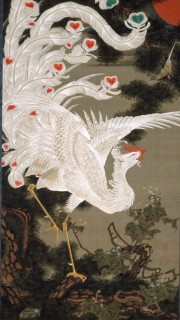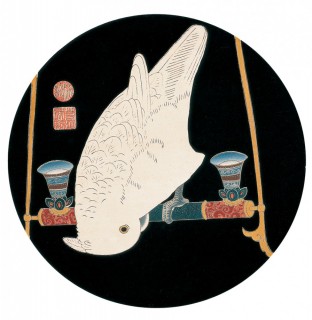Loading
Search
▼ Ito Jakuchu: Quite The Rare Bird
- Category:Other
The best time to see Ito Jakuchu’s work was back in 2000 or 2006, when there were two major exhibitions that aimed to re-evaluate the underappreciated 18th-century Kyoto painter.
Now that re-evaluation has picked up plenty of steam we are currently experiencing a powerful “Jakuchu Boom,” which means that the “300th Anniversary of his Birth: Jakuchu” at the Tokyo Metropolitan Museum of Art is a busy and crowded exhibition — not ideal conditions for appreciating the colorful yet delicate beauty of his work.
Jakuchu is particularly loved for his vivid depictions of animals, especially birds, of which there are several excellent examples, but a similar artistic love is bestowed by the artist on all aspects of nature, revealing a Buddhistic embrace of life in its various forms.
Perhaps the most impressive of the bird-themed works is “Cactus and Domestic Fowls” (1790), a piece painted on six golden door panels from Saifuku-ji Temple in Niigata Prefecture. The contrast between the gold and the colors emphasizes the strutting forms of the birds, while the cactus makes a lazy appearance on the side as if to comment on the prickly nature of the proud fowls.
One imagines that he may have been something of an odd bird.
This work also reveals Jakuchu’s constant subtle humor that riffs off the eccentricities of the animal world as well as the constraints and possibilities of artistic media. You can find it in many other works, such as his kappazuri (also known as katagamizuri-e, prints printed in black and then color stencilled) “Cockatoo” (1771). Jakuchu seems to have chosen the upside-down pose of the little bird to refer to the various inversions of the printing process.
A completely different technique also reveals artistic humor — “Phoenix” (undated), an hanging scroll ink painting that was completed relatively quickly. Playful brush strokes around the neck of the bird loosen and enliven what would otherwise have been an overly precise and straight composition, while also throwing a hint of gentle mockery at the austere bird. Such gentle touches constantly shine through Jakuchu’s work, suggesting that he may even have been subtly commenting on the vanity and pomposity of the society around him.
Jakuchu’s name appears second to Maruyama Okyo’s in the “Heian Jinbutsushi” (“Record of Heian Notables”), a kind of who’s who of Kyoto of the period, testifying to his high standing in his own time. But, if he was such an accomplished and recognized artist, why did he need a boom to come back into favor? This implies a period of neglect.
Perhaps it’s because, unlike Okyo, who founded a school and thus had many disciples and followers to keep his reputation high, Jakuchu was a more solitary creature. His painting studio was even named Dokurakuka, literally meaning “solitary pleasure nest.”
“The 300th Anniversary of his Birth: Jakuchu” at the Tokyo Metropolitan Art Museum runs until May 24; 9:30 a.m.-5:30 p.m. (Fri. until 8 p.m.). ¥1,600. Closed Mon.
- May 11, 2016
- Comment (0)
- Trackback(0)



